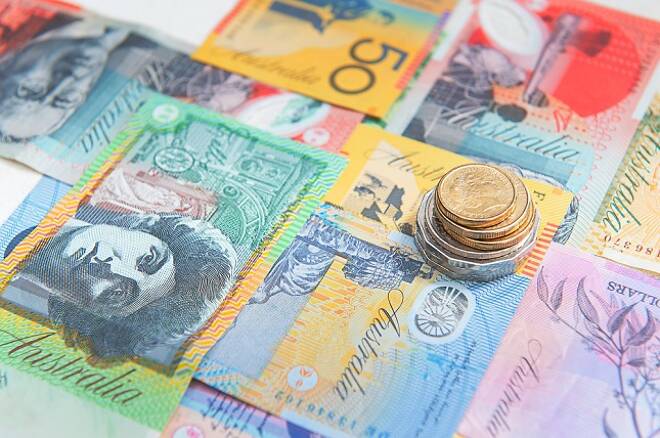Advertisement
Advertisement
Aussie Weakens on Suspect Employment Data, Kiwi Investors Fear Negative Rates
By:
The Australian Dollar closed lower last week, but surprisingly finished higher three out of five trading sessions. The New Zealand Dollar collapsed at mid-week after comments from the governor of the Reserve Bank of New Zealand (RBNZ). The Dollar/Yen finished marginally higher.
The Asia-Pacific currencies finished lower last week but the price action was actually mixed amid volatile shifts in investor sentiment tied to the impact of the coronavirus on the domestic and global economies. While most investors were eyeing the U.S. Dollar, Aussie traders showed a bearish reaction to employment data, Kiwi sellers were spooked by comments about negative interest rates and Japanese Yen investors struggled with strong demand for risky assets and rising coronavirus cases.
Australian Dollar
The Australian Dollar closed lower last week, but surprisingly finished higher three out of five trading sessions. Most of last week’s loss took place in one trading session.
The week started with the Australian Dollar, which is sensitive to Chinese demand because of the country’s dependence on raw materials exports, rising to more than a one-month high.
Helping to underpin the Aussie was better-than-expected economic data from China, which painted a less gloomy picture than feared following the coronavirus outbreak there.
China’s March exports fell 6.6% from a year earlier, compared with a forecast for a 14% drop, while imports fell by less than 1%, compared with a 9.5% drop predicted by economists.
While Chinese trade data for March provided bullish fodder for Australian Dollar investors by showing an abatement in the rate of decline in imports and exports after severe plunges in January and February, traders showed little reaction to Friday’s report from China which showed the world’s second largest economy shrank 6.8% in the first quarter of 2020 compared to a year earlier. In fact, the Australian Dollar closed higher for the session as investors, cautiously optimistic about the results of a drug trial and President Donald Trump’s plan to reopen the economy, regained some appetite for risk.
In economic news, the Australian Bureau of Statistics (ABS) on Thursday cautioned that data on March employment covered just the first two weeks of the month before measures were taken to contain the spread of COVID-19, the respiratory disease caused by the new coronavirus.
The data showed employment actually rose by 5,900 in March, when analysts had expected a drop of 40,000, while the jobless rate ticked up only slightly to 5.2%. However, the ABS emphasized the survey covered only the period of March 1-14 before entire sectors of the economy were shut to head off the virus. Traders read this news as bearish.
Last week, the AUD/USD settled at .6363, down 0.0021 or -0.33%.
New Zealand Dollar
The New Zealand Dollar collapsed at mid-week after the governor of the Reserve Bank of New Zealand (RBNZ) said that negative interest rates are not off the table in its response to the economic fallout of the coronavirus crisis.
RBNZ cut its official cash rate (OCR) to 0.25% in March in response to the pandemic, and pledged to keep it at that level for at least 12 months.
When asked by a parliamentary committee what other stimulus steps could be taken, Adrian Orr told lawmakers. “At most we are the end of the beginning, around what may need to be done and what we can do.”
Likewise, negative interest rates are not ruled off the table…and there are other direct financing measures,” he added.
Last week, the NZD/USD settled at .6034, down 0.0094 or -1.54%.
Japanese Yen
The Dollar/Yen finished marginally higher last week after posting an uneventful two-sided trade.
The Forex pair fell to a two-week low as risk sentiment returned to the market following better-than-expected economic data from China (Trade Balance), which painted a less gloomy picture than feared following the coronavirus outbreak there.
The USD/JPY settled at 107.554, down 0.081 or -0.08%.
The Dollar/Yen hit a one-week high later in the week as investors fled to safe-haven assets following the release of weekly U.S. jobless data which showed a record 22 million Americans have sought unemployment benefits in the last month, erasing nearly all job gains since the Great Recession.
Following Thursday’s rise, the dollar ticked lower on Friday as investors, cautiously optimistic about the results of a drug trial and President Donald Trump’s plan to reopen the economy, regained some appetite for risk.
About the Author
James Hyerczykauthor
James Hyerczyk is a U.S. based seasoned technical analyst and educator with over 40 years of experience in market analysis and trading, specializing in chart patterns and price movement. He is the author of two books on technical analysis and has a background in both futures and stock markets.
Advertisement
